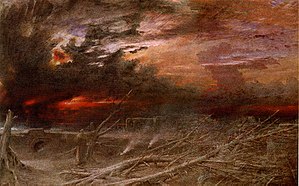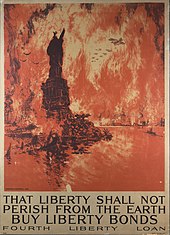
Back نهاية العالم وما بعدها Arabic Apokaliptika və postapokaliptika Azerbaijani Постапакаліптыка BE-X-OLD Апокалиптична и постапокалиптична фантастика Bulgarian Apocalipsi i postapocalipsi a la ficció Catalan کۆتاییی جیھان (وێژە) CKB Apokalyptická a postapokalyptická sci-fi Czech Escenario apocalíptico Spanish Zientzia-fikzio post-apokaliptikoa Basque ادبیات داستانی آخرالزمانی و پسا-آخرالزمانی Persian


Apocalyptic and post-apocalyptic fiction is a subgenre of science fiction in which the Earth's (or another planet's) civilization is collapsing or has collapsed. The apocalypse event may be climatic, such as runaway climate change; astronomical, such as an impact event; destructive, such as nuclear holocaust or resource depletion; medical, such as a pandemic, whether natural or human-caused; end time, such as the Last Judgment, Second Coming or Ragnarök; or any other scenario in which the outcome is apocalyptic, such as a zombie apocalypse, cybernetic revolt, technological singularity, dysgenics or alien invasion.
The story may involve attempts to prevent an apocalypse event, deal with the impact and consequences of the event itself, or it may be post-apocalyptic, set after the event. The time may be directly after the catastrophe, focusing on the psychology of survivors, the way to keep the human race alive and together as one, or considerably later, often including that the existence of pre-catastrophe civilization has been mythologized. Post-apocalyptic stories often take place in a non-technological future world or a world where only scattered elements of society and technology remain.
Various ancient societies, including the Babylonian and Judaic, produced apocalyptic literature and mythology which dealt with the end of the world and human society, such as the Epic of Gilgamesh, written c. 2000–1500 BCE. Recognizable modern apocalyptic novels had existed since at least the first third of the 19th century, when Mary Shelley's The Last Man (1826) was published; however, this form of literature gained widespread popularity after World War II, when the possibility of global annihilation by nuclear weapons entered the public consciousness.[1]
- ^ Booker, M. Keith; Thomas, Anne-Marie (2009). The Science Fiction Handbook. John Wiley and Sons. ISBN 978-1-4443-1035-1.
© MMXXIII Rich X Search. We shall prevail. All rights reserved. Rich X Search